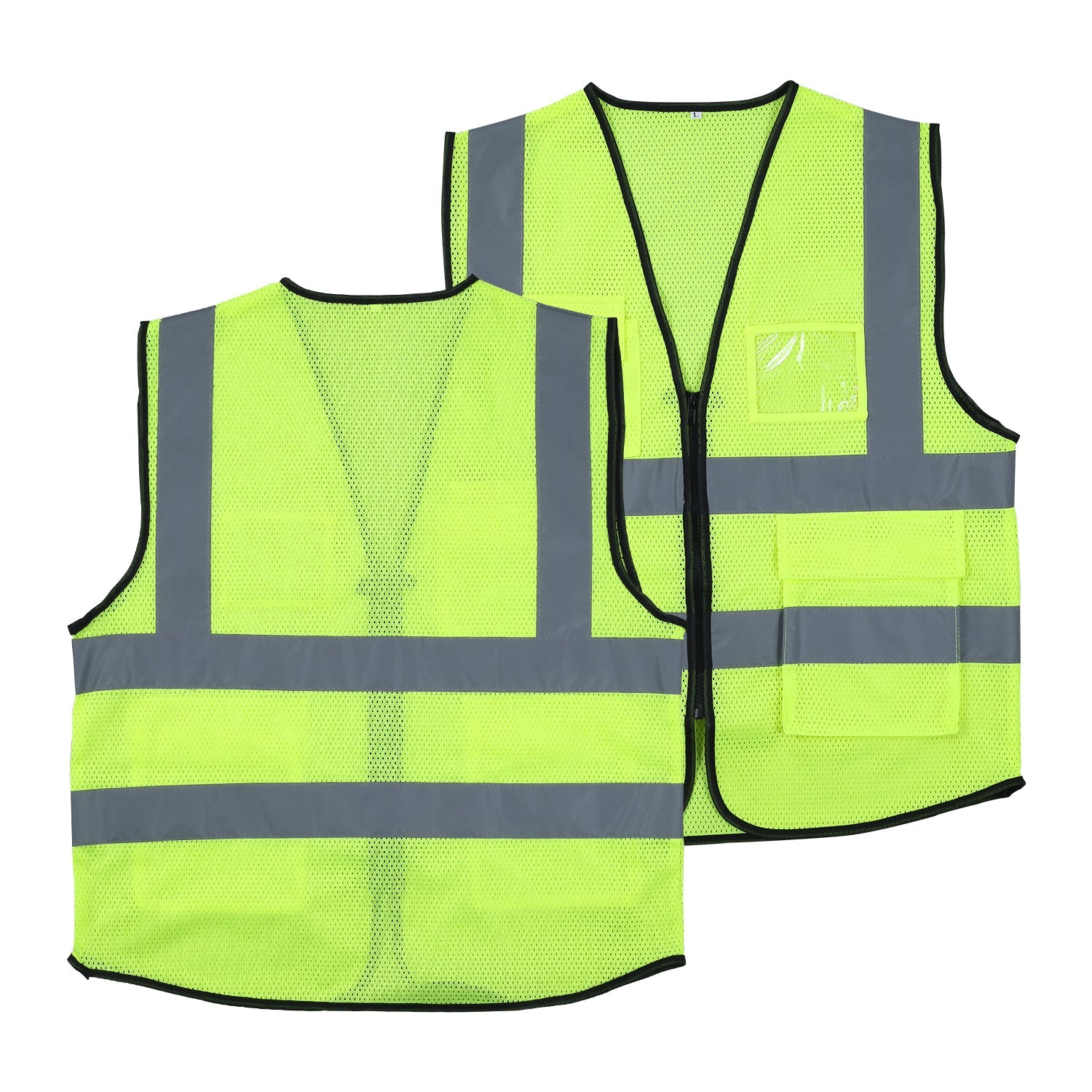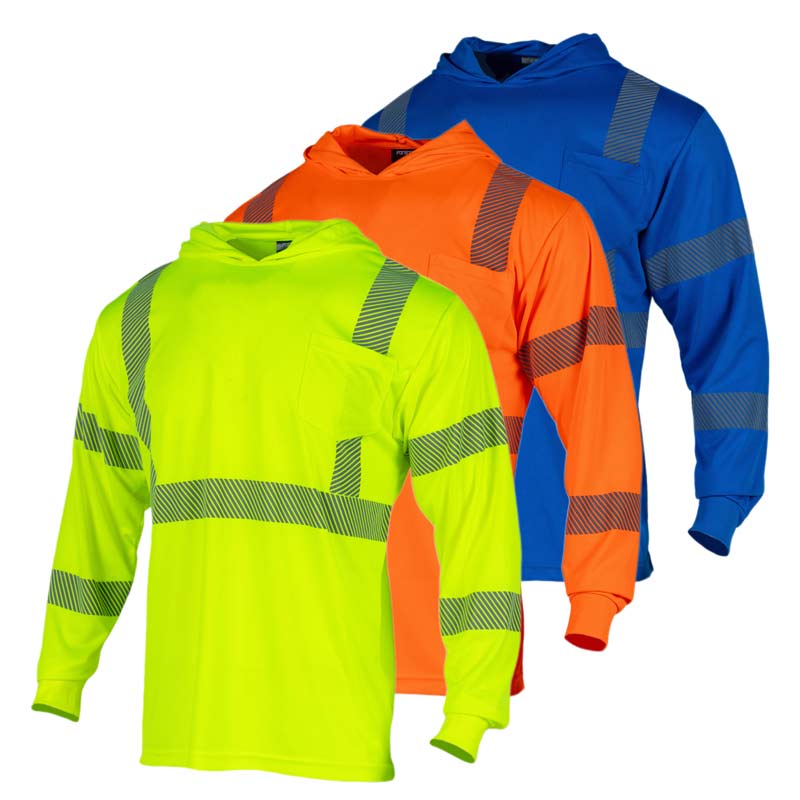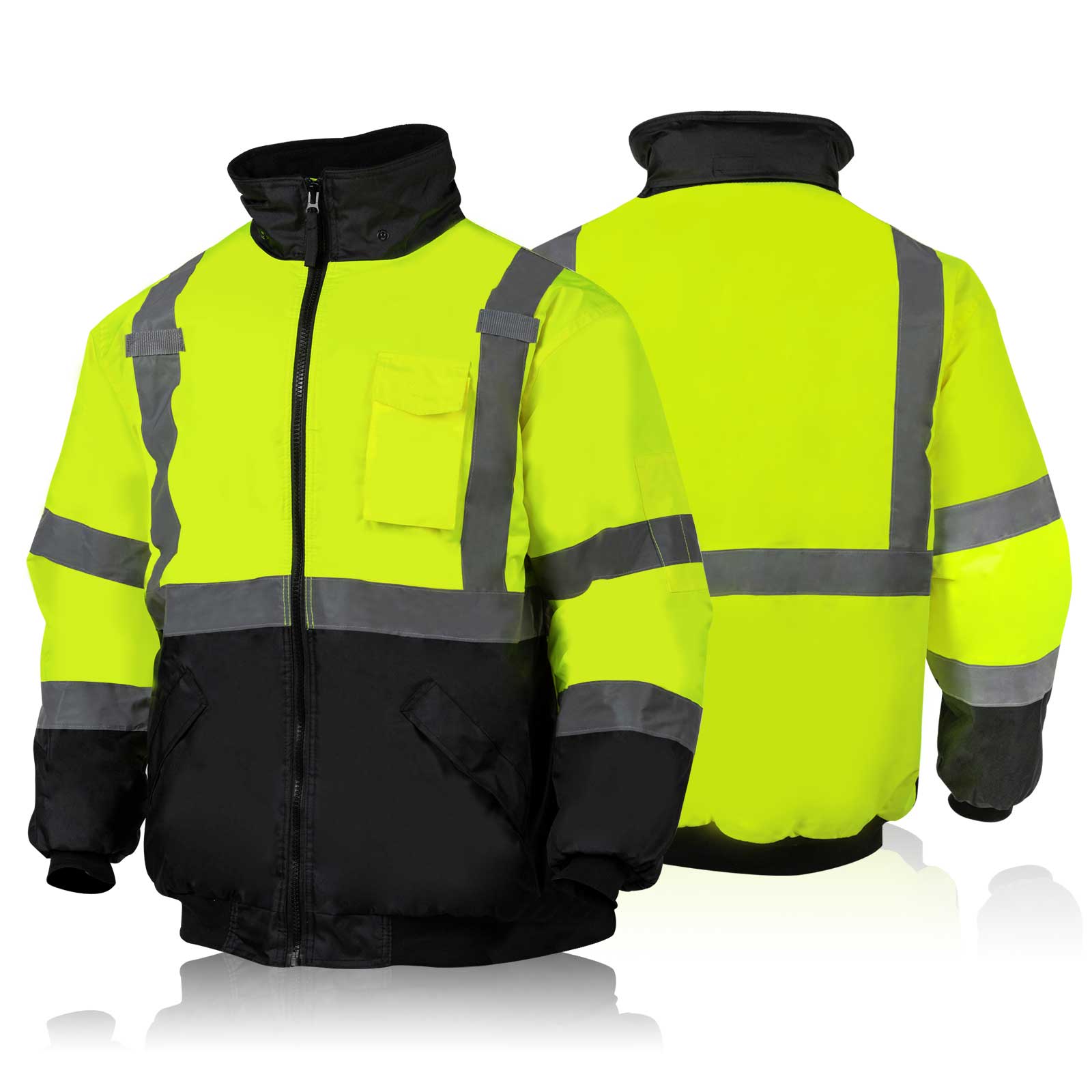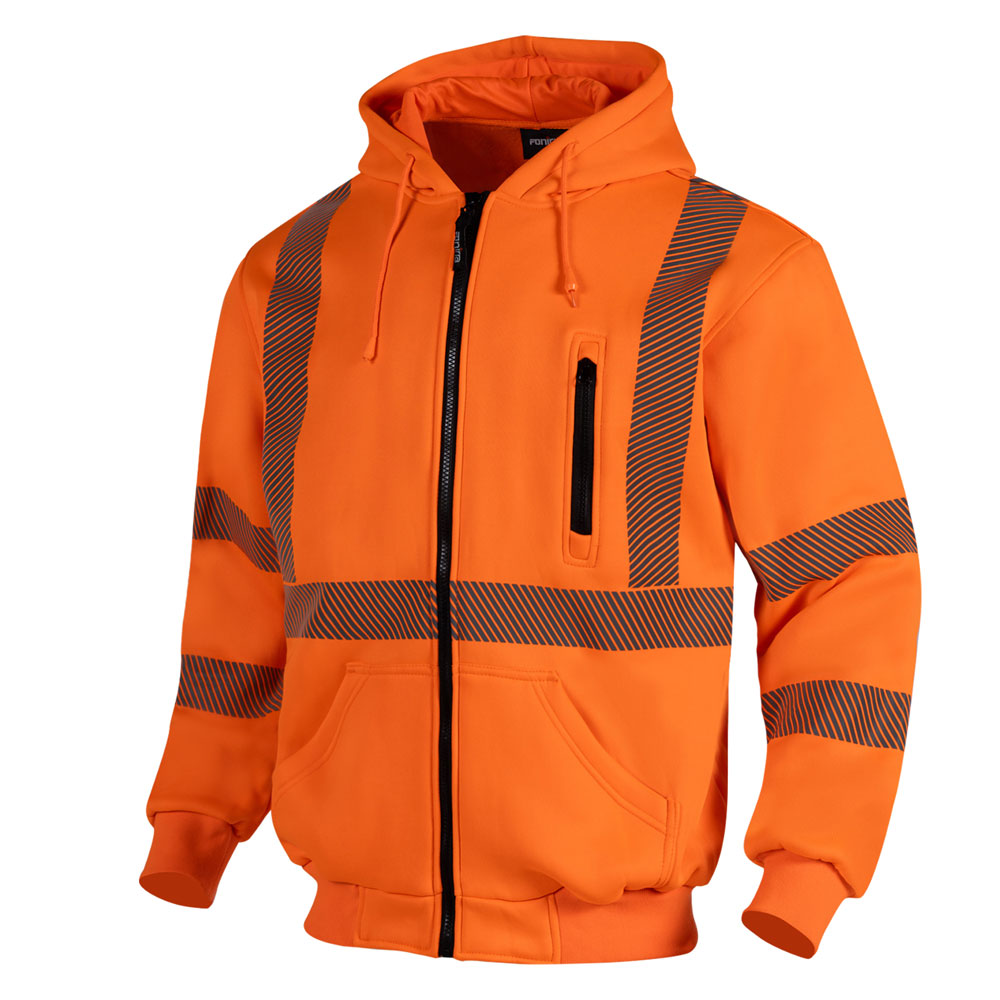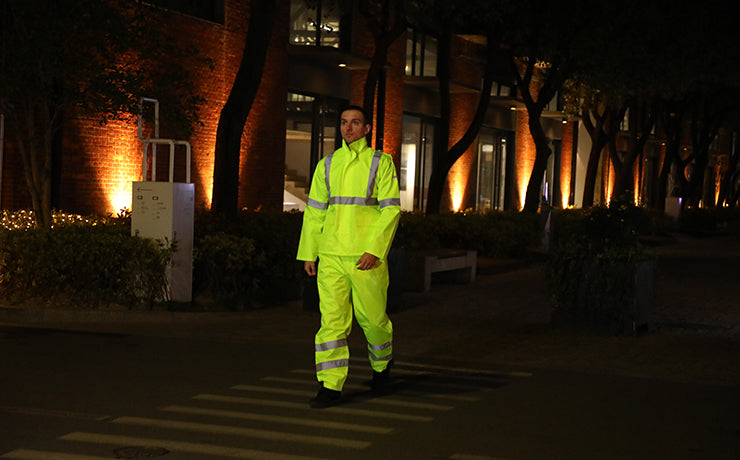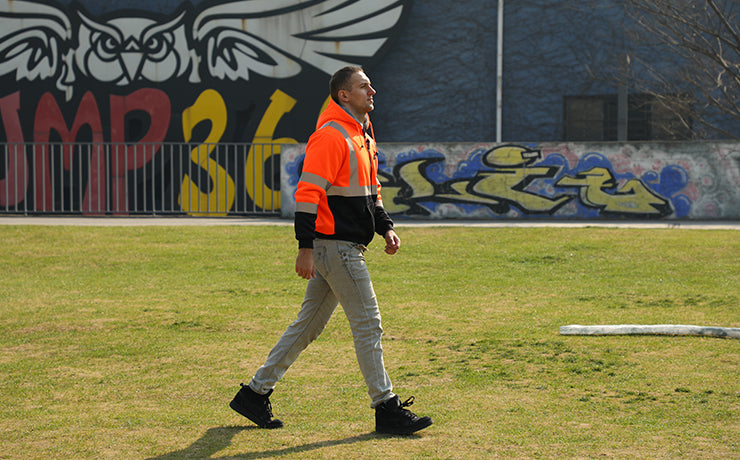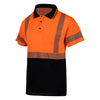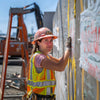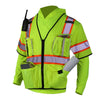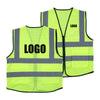A Deep Dive into the ANSI ISEA 107-2020 Standards
The ANSI ISEA 107-2020 standards represent a pivotal point in the ongoing evolution of workplace safety, especially concerning high-visibility safety clothing.
Developed by the American National Standards Institute (ANSI) in collaboration with the International Safety Equipment Association (ISEA), these standards provide comprehensive guidelines to enhance worker conspicuity and safety in various environments.
The relevance of these standards is particularly crucial in ensuring that workers in high-risk areas are adequately protected and easily visible, thereby reducing the likelihood of accidents.
What is ANSI and ISEA 107-2020
The American National Standards Institute, commonly known as ANSI, plays a critical role as the Standards Institute in America, fostering the development of technology standards to ensure safety, quality, and interoperability.
ANSI's collaboration with the International Safety Equipment Association (ISEA) - a body dedicated to advocating for safe and effective workplace equipment - led to the formation of the ANSI ISEA 107-2020 standards. These standards are designed to ensure enhanced visibility safety apparel meets specific criteria for protecting workers.
Key Components of the ANSI ISEA 107-2020 Standards
The ANSI ISEA 107-2020 standards are detailed and focus on enhancing the safety and visibility of workers in different environments. They categorize high-visibility clothing into three main types, each with specific performance classes and requirements for background and retroreflective materials.
Type O (Off-Road)
-
Overview: Intended for off-road use, often in controlled environments like warehouses or factories.
-
Performance Class: Features a single performance class, Class 1.
-
Background Material: Requires 217 in² of background material.
-
Retroreflective Material: Necessitates 155 in² of retroreflective material.
-
Suitable Jobs: Ideal for workers in warehousing, shopping cart retrieval, and oil & gas extraction.
Type R (Roadway)
-
Overview: Designed for use on roadways with a higher presence of moving vehicles and equipment.
-
Performance Classes: Includes Class 2 and Class 3, with Class 2 being suitable for road construction workers and Class 3 for high-speed traffic areas.
-
Background Material: Class 2 requires 775 in², and Class 3 requires 1240 in² of background material.
-
Retroreflective Material: Class 2 needs 201 in², and Class 3 needs 310 in² of retroreflective material.
-
Suitable Jobs: Ideal for road construction workers, airport ramp workers, and DOT workers.
Type P (Public Safety)
-
Overview: Tailored for public safety professionals like police, fire, and EMS.
-
Performance Classes: Includes Class 2 and Class 3, with Class 3 requiring more material for high-risk environments.
-
Background Material: Class 2 requires 450 in², and Class 3 requires 775 in² of background material.
-
Retroreflective Material: Both classes need 201 in² (Class 2) and 310 in² (Class 3) of retroreflective material.
-
Suitable Jobs: Suitable for first responders and public safety figures such as police, fire, and EMS.
1. Material Requirements:
The standards specify the minimum amounts of background and retroreflective materials, along with their placement. The requirements for background and combined-performance materials include specifications for color, brightness, fabric strength, and moisture resistance.
2. Color Choices
There are three colors to choose from for background and combined-performance material: fluorescent yellow-green, fluorescent orange-red, and fluorescent red. The choice of color depends on the work and natural environment to achieve the highest degree of worker contrast.
3. Retroreflective
The retroreflective material must meet specific photometric and physical performance requirements, ensuring visibility under various conditions, including low light and at night. This includes tests for abrasion resistance, flexing, and laundering.

Additional Considerations and Care Labeling
Once all materials have been tested and meet the standard's requirements, garments can be labeled as ANSI/ISEA 107-2020 compliant. The care labeling should include:
- the manufacturer's name
- size
- standard name
- compliance with flame resistance
- pictogram showing the garment Type, Class, and Level of performance for the retroreflective material.

source: 3M ANSI/ISEA Guide
These standards ensure that workers are equipped with the necessary HVSA (High Visibility Safety Apparel) to stay safe and visible in various working conditions.
The specifications of the ANSI ISEA 107-2020 standards highlight the importance of material, color, and retro-reflectivity in enhancing worker safety across different industries and environments.
Impact on Safety Clothing Design and Use
1. Design of High-Visibility Apparel:
The standards dictate specific requirements for high visibility safety apparel, including the use of high visibility materials and reflective materials. This leads to the design of garments that ensure optimal visibility in various working conditions, from daytime to low-light environments.
2. Garment Types and Accessories:
The standards categorize garment types, such as safety vests and jackets, tailored for specific environments like temporary traffic control or construction sites. High visibility accessories are also designed to complement these garments, ensuring comprehensive visibility.
3. Material Specifications:
Background material and reflective materials, including fluorescent material, are specified. This ensures that the garments provide the necessary visibility in different light conditions and work environments, especially in the construction industry where worker visibility is crucial.
Role in Enhancing Worker Safety
-
Increased Worker Visibility: By mandating the use of reflective and fluorescent materials, these standards ensure that workers are highly visible. This is crucial in areas like construction sites or during temporary traffic control operations where being seen can be a matter of life and death.
-
Adaptation to Various Environments: The standards provide guidelines for different types of high visibility apparel suited to various work environments. This tailored approach means that workers have the appropriate level of visibility and protection for their specific work setting.
The Importance of Compliance for Businesses and Workers

Compliance with the ANSI ISEA 107-2020 standards is crucial for both businesses and workers, offering significant benefits and ensuring a safer work environment.
For Businesses:
-
Risk Reduction: Investing in compliant clothing reduces the risk of workplace accidents, thereby potentially lowering insurance premiums and legal liabilities.
-
Regulatory Compliance: Adherence to these standards ensures that businesses meet legal and regulatory requirements, avoiding fines and penalties.
-
Enhanced Reputation: Demonstrating a commitment to worker safety enhances a company’s reputation and can be a decisive factor in winning contracts, especially in industries where safety is paramount.
For Workers:
-
Increased Safety: Wearing ANSI ISEA 107-2020 compliant safety gear significantly enhances worker visibility, reducing the risk of accidents and injuries, especially in high-risk environments like construction sites or roadways.
-
Peace of Mind: Knowing that their safety gear meets rigorous standards provides workers with greater peace of mind, which can lead to improved morale and productivity.
-
Professionalism: Compliant clothing often incorporates modern designs and materials, contributing to a more professional appearance and potentially fostering a sense of pride and professionalism among workers.
Fonirra's Compliance with ANSI ISEA 107-2020
Fonirra's high-visibility safety apparel aligns well with the ANSI ISEA 107-2020 standards, enhancing worker safety and visibility.
1. JK50 Class 3 Safety Hi Vis Jacket:
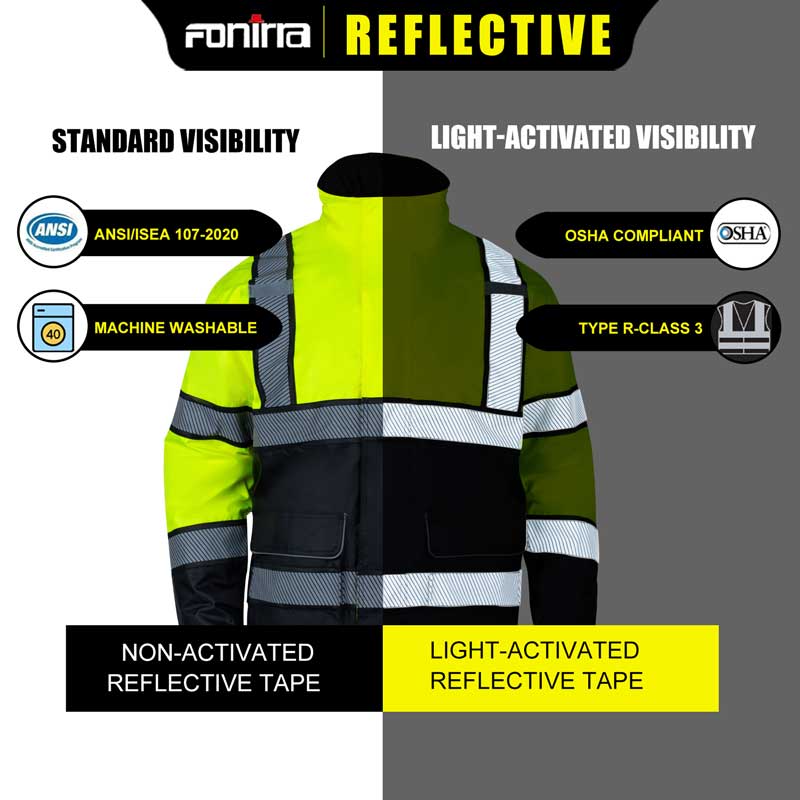
-
Made of durable and waterproof 300D Oxford fabric.
-
Features 2-inch wide reflective strips for enhanced visibility.
-
Available in bright colors suitable for workplace wear.
-
Complies with Type R Class 3 of the ANSI/ISEA 107-2020 standards, suitable for high-risk environments.
2. VT01 Reflective Hi Vis Work Vest:
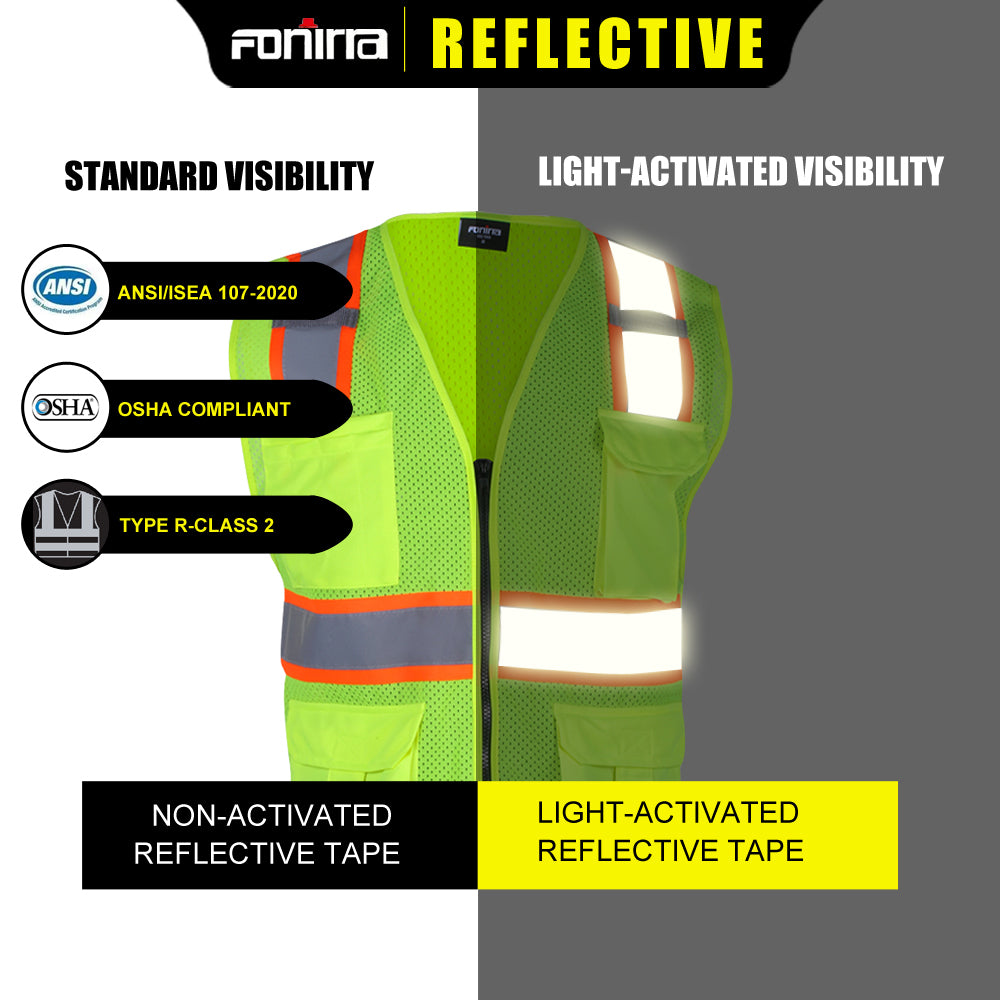
-
Constructed with 100% polyester, breathable and quick-dry reflective material.
-
Equipped with multiple functional pockets for practical use.
-
ANSI/ISEA 107-2020 Type R Class 2 compliant, featuring bright mesh fabric and 2" silver reflective tape for 360° visibility.
Conclusion
The ANSI ISEA 107-2020 standards play a crucial role in enhancing workplace safety through high-visibility safety apparel. Compliance with these standards is essential for both businesses and workers, offering improved safety, visibility, and professional integrity.
Fonirra's product range showcases a commitment to these standards, ensuring that workers are adequately protected in various environments.
This alignment with ANSI ISEA standards underscores the importance of high-visibility apparel in maintaining safety and reducing risks in the workplace.

